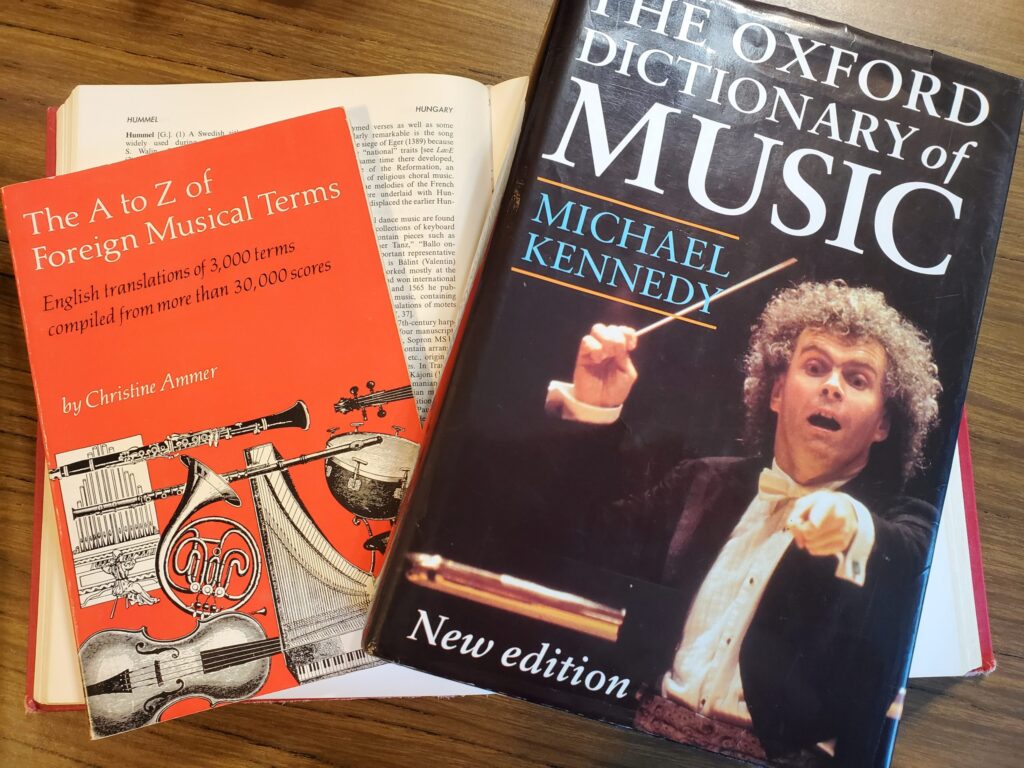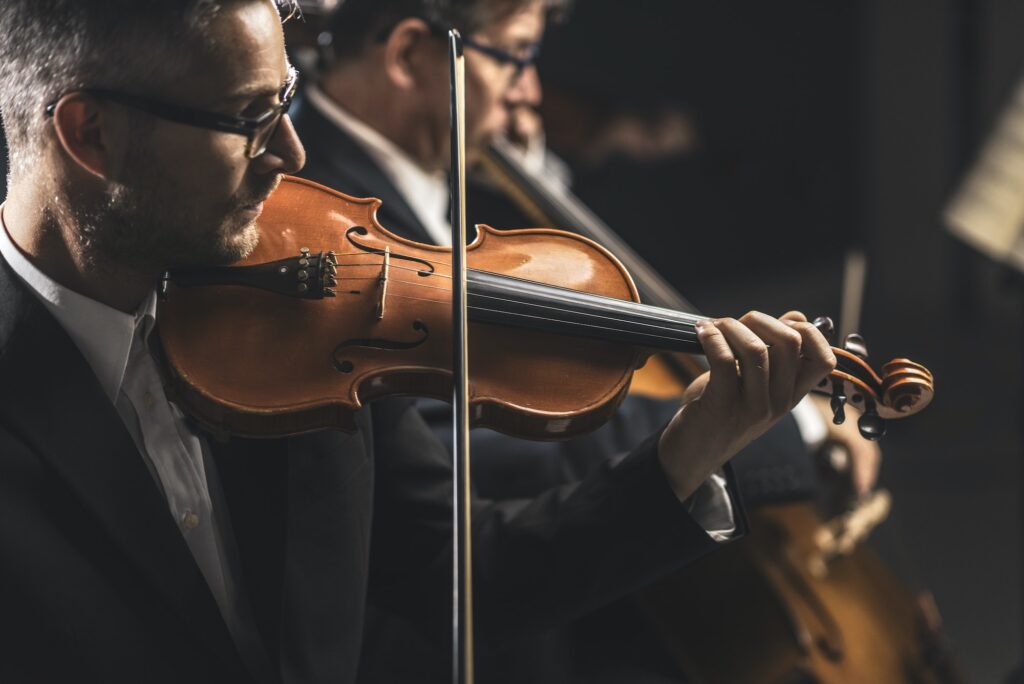Play 50 Questions At The Intermediate Level
BY MEGHAN VANCE • AUGUST 14, 2023
In part one, we discussed what active listening is and how you can begin practicing it. We started with six questions for the beginner active listener, questions that even those with no formal music education can answer. In general, the beginner questions required no specialized vocabulary, and could be answered even by very young students.

This week we’ll move on to the intermediate active listening level, which does ask you to use specialized vocabulary. These terms should be familiar to most beginner musicians, but if you’re unfamiliar with a term (or just a little rusty), ask your teacher for help. You can also use a music dictionary to look up vocabulary words.
If you’re the parent of an elementary-aged student, you may need to regularly remind your student what these terms mean. If you’re a parent unfamiliar with the vocabulary, you may want to ask your teacher for a cheat sheet of terms and definitions that you can keep close by for reference: in the glove box, for example, or pinned to the fridge.
THE INTERMEDIATE LEVEL
AN INTERMEDIATE LOOK AT LYRICS
- Are the rhymes exact or near rhymes?
- Exact rhyme example: cat & mat
- Near rhyme example: cat & kept
- What alliteration do you hear?
- Alliteration is repeated consonants, especially at the beginning of syllables.
- Alliteration example: Peter Piper picked a peck of pickled peppers
AN INTERMEDIATE LOOK AT TEMPO & RHYTHM
- What is the time signature of the piece?
- What is the metronome speed?
- A tip from dBs Institute: “Get a tap tempo app for your phone and whenever you find yourself casually listening to some music try and guess the tempo. Once you’ve made your best guess get out the app, tap along and see how close you were.”
AN INTERMEDIATE LOOK AT PITCH
- What is the range of the melody?
- Is the song in a major key or a minor key?

AN INTERMEDIATE LOOK AT INSTRUMENTATION
- Is the vocalist male or female?
- What instrument groups and specific instruments do you hear?
- NPR writes, “Each instrument produces a different range of ‘colors’ – the metallic brilliance of a flute, for example, sounds a whole lot different than the warmth of a female singer, though they have similar pitch ranges….A full orchestra is also a great means to show off the differences in color: Think of Ravel’s Bolero, in which the rhythm and melody never change – only the instrumentation does.”
AN INTERMEDIATE LOOK AT EXPRESSION & MEANING
- Can you identify the dynamics of the song while you listen to it?
- How does the sound of the music relate to the title of the song?
- How does the sound of the music relate to the ideas expressed by the lyrics?
- Try listening to the same song several times, each time by a different performer. What’s different between the performances?
- Youtube channel Inside The Score says, “You can listen to the same piece done by five different performers, and each performance will be fresh in a unique kind of way,” and “You might be on the edge of your seat for one performance of Beethoven’s fifth, but be bored to tears by a different performance.”

AN INTERMEDIATE LOOK AT HISTORY & CONTEXT
- What purpose does the song serve? Think about whether the song might be written to:
- Help the audience relax
- Make the audience want to dance
- Make a social or political point
- Accompany a movie or a game
- What kind of song is it? If you’ve listened to enough music or played enough repertoire, you may be able to pinpoint a specific kind of song, such as a ballad, boogie, protest song, march, or fanfare.
Remember: these levels and questions are merely prompts to help you listen to different aspects of the music. Don’t feel as though you have to limit yourself to the intermediate questions listed above. As a music student, one of the best ways to grow your active listening skills is to think about what you’ve been learning in your lessons.
- What repertoire have you played?
- What techniques have you practiced?
- What theory concepts have you learned?
- What history have you studied?
Try to think about how all of the things you’ve been learning might apply to the music you hear around you.

Next week, in part three, we’ll move from intermediate questions on to advanced questions for active listening.

